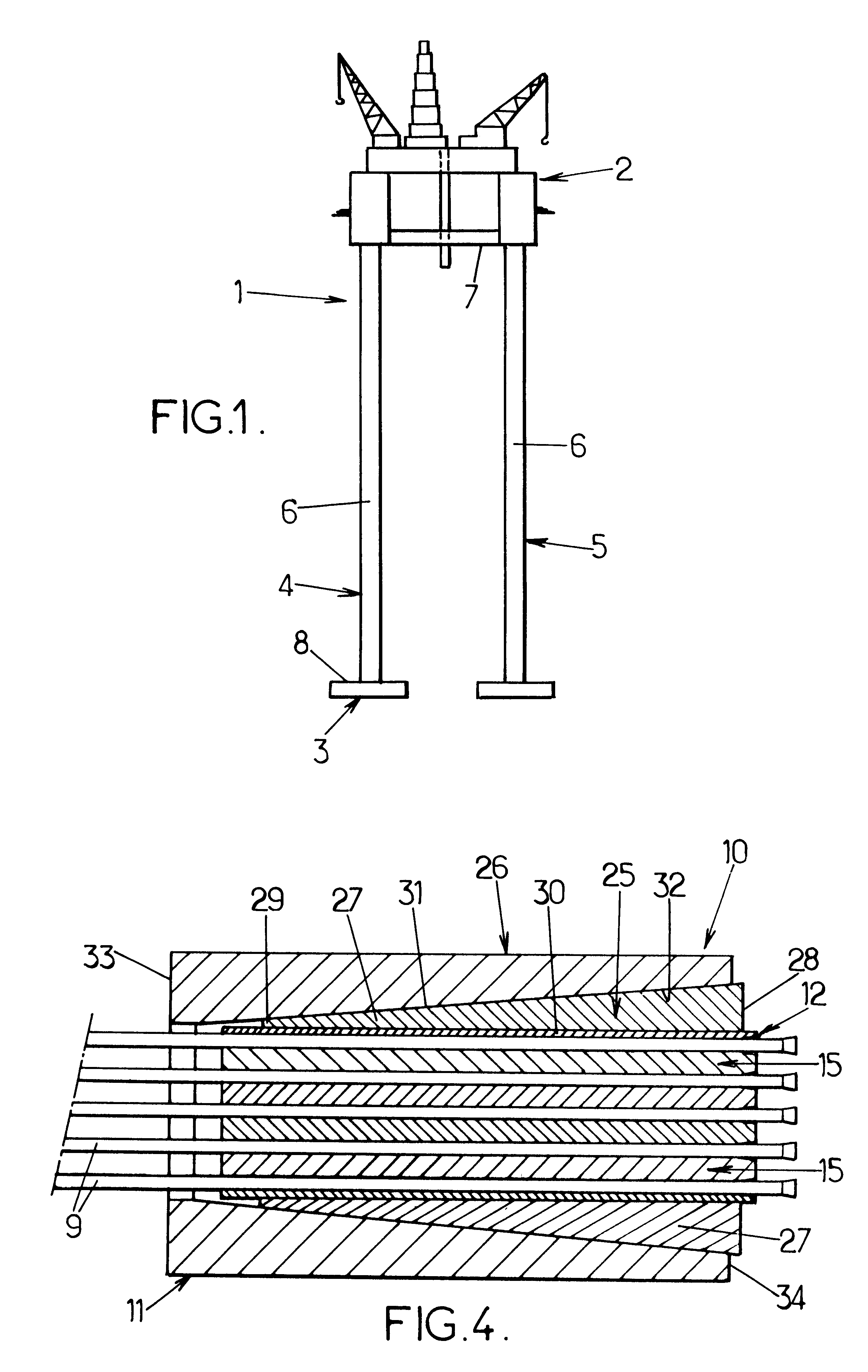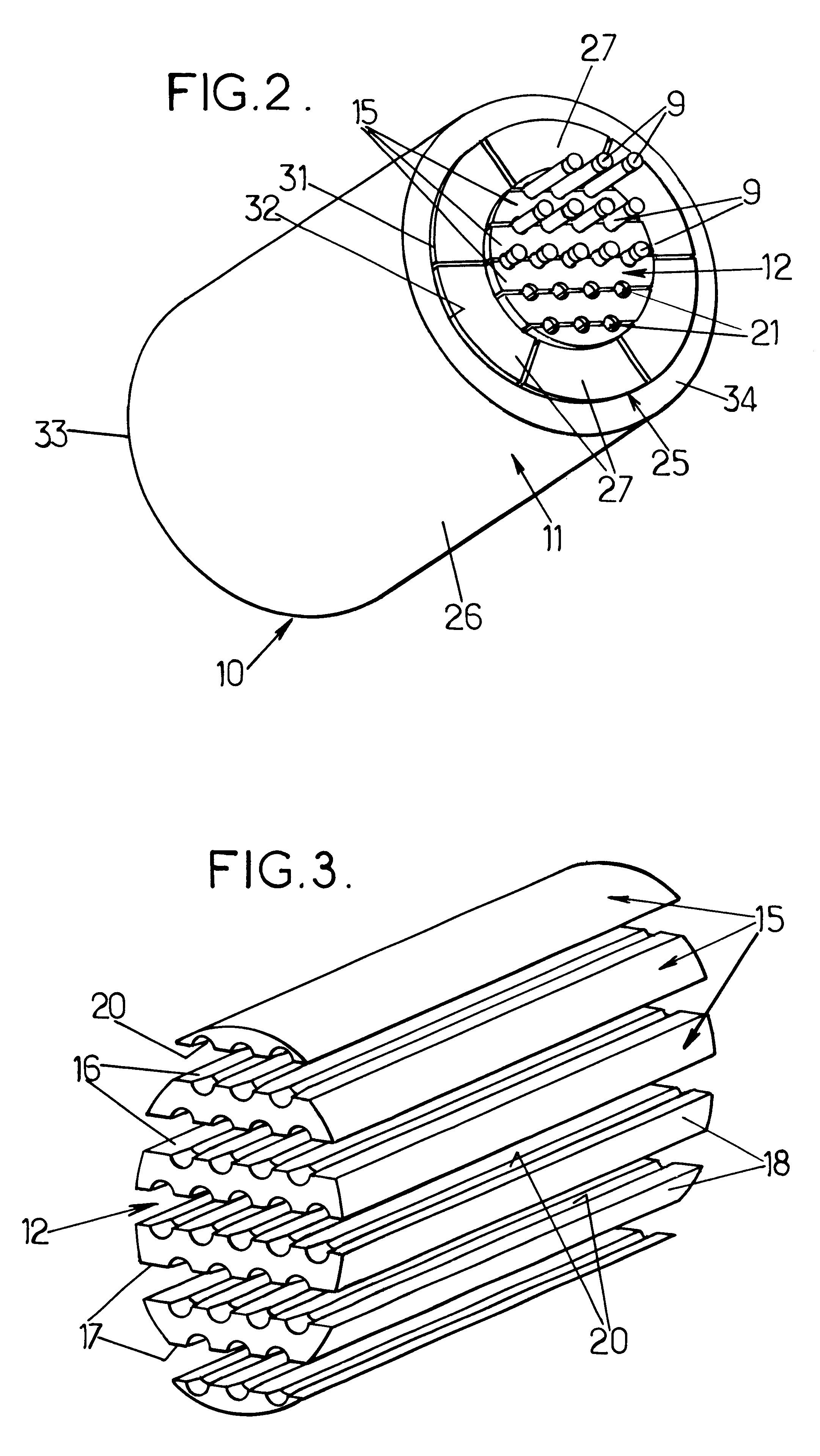System for connecting a structural cable to a building work structure
a technology for connecting structural cables and building work structures, which is applied to cables for vehicles/pulleys, bridges, structural elements, etc., can solve the problems of not always easy to access and expensive installation
- Summary
- Abstract
- Description
- Claims
- Application Information
AI Technical Summary
Benefits of technology
Problems solved by technology
Method used
Image
Examples
first embodiment
The transmitting device 12 consists, in the first embodiment, of a certain number of plates 15 between which the wires 9 are housed.
Each of the plates 15 is of roughly rectangular shape and has a top side 16, an underside 17 which is roughly flat, and longitudinal edges 18 which, taken along the thickness of the plate, are of curved shape so that the collection of plates 15, once superposed one on the other, form a cylinder on a circular base. Thus, each plate 15 forms a kind of longitudinal slide of a cylinder, which is thin in comparison with its length.
Each top side 16 and each underside 17 of the plates 15 has a channel 20. The cross section of the channels 20 is similar to half the cross section of the wires 9.
The channels 20 of a top side 16 of one plate 15 face the channels 20 of an underside 17 of the next plate 15. The channels 20 thus, in pairs, define passageways 21, the cross section of which complements that of the wires 9.
The plates 15 are made of a metallic material o...
second embodiment
In the second embodiment depicted in FIGS. 5 and 6, the connection system 50 differs from the previously described one only in the form of the load transmitting device 52, the other constituent elements are similar and bear identical numeral references.
The transmitting device 52 no longer occupies the entire interior volume of the cylinder defined by the keys 27 of the jaw assembly 25. This device consists of a number of metal sleevings 55, for example made of aluminum. The sleevings 55 are of an inside diameter roughly identical to the diameter of the wires 9 so that these wires are forced into the sleevings. The outside diameter of the sleevings is small by comparison with the inside diameter of the cylinder delimited by the keys 27.
The wires 9 are also bonded into the sleevings 55. These sleevings are made of a material with a low elastic limit, possessing a certain plasticity.
The way in which the connecting system 50 is mounted is roughly identical to the way in which the system...
PUM
| Property | Measurement | Unit |
|---|---|---|
| shape | aaaaa | aaaaa |
| tension | aaaaa | aaaaa |
| tensile | aaaaa | aaaaa |
Abstract
Description
Claims
Application Information
 Login to View More
Login to View More - R&D
- Intellectual Property
- Life Sciences
- Materials
- Tech Scout
- Unparalleled Data Quality
- Higher Quality Content
- 60% Fewer Hallucinations
Browse by: Latest US Patents, China's latest patents, Technical Efficacy Thesaurus, Application Domain, Technology Topic, Popular Technical Reports.
© 2025 PatSnap. All rights reserved.Legal|Privacy policy|Modern Slavery Act Transparency Statement|Sitemap|About US| Contact US: help@patsnap.com



